VET APPROVED

The information is current and up-to-date in accordance with the latest veterinarian research.
Learn more »Goldfish are usually bursting with activity and swimming playfully around the tank, waiting for their next meal. This makes it concerning when we find our goldfish inactive and lying on the bottom of the tank. This is abnormal goldfish behavior and should not be overlooked. Bottom-sitting is typically one of the first signs of an unhealthy or unhappy goldfish. Ignoring this behavior can lead to your goldfish getting worse health-wise or even lead to their passing.
It is best to find the source of the problem, whether it is a disease or not. There is always a root cause for bottom sitting, and if caught early, your goldfish is more likely to make a full recovery.
This article will inform you of the different reasons your goldfish may be bottom-sitting and how, if possible, to determine a solution.

Bottom-Sitting in Goldfish
There are many factors to consider when your goldfish is acting inactive and lethargic along the bottom of their tank. This concerning behavior is displayed as a goldfish hovering or lying down with its stomach on the substrate. They may or may not have clamped fins and this is a sign your goldfish is not feeling too good. Your goldfish may also develop sores on the bottom of the stomach if the rough substrate is cutting into their scales the whole time. This will be seen as red blotches on the stomach. Your goldfish may lay at the bottom of the tank for short or long periods, all of which are concerning.
The 10 Reasons That Goldfish Bottom-Sit (With Solutions)
1. Internal Stress
A stressed goldfish is generally unhealthy and will become lethargic. A stressed goldfish may have its fins partially clamped and remain inactive in the tank. This behavior usually lasts for short amounts of time and can be combined with erratic swimming and then an unexpected switch to bottom-sitting. Your goldfish can be stressed for a variety of reasons, such as dirty water, an unsuitable tank mate, living in a bowl, or other small spherical aquaria.
- Solution: Keep the environment calm around the tank and ensure that you provide your goldfish with a large standard rectangular tank. Keep replenishing the water to keep it clean.
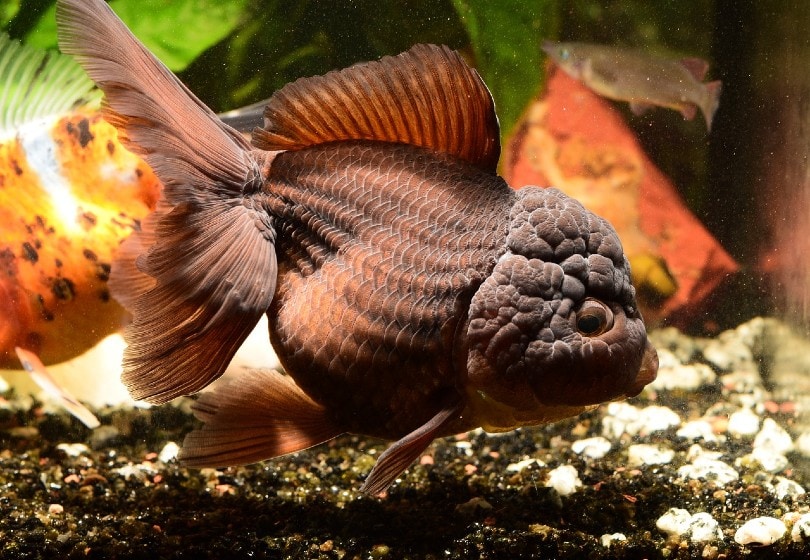
2. Disease
One of the most common explanations for a goldfish bottom-sitting is an underlying illness. There are an enormous amount of diseases, infections, or disorders that are not always identifiable in the early stages. Once you notice a sign of disease in your goldfish, you should take immediate action.
- Solution: Ensure you do frequent health checks for any signs of disease on your goldfish. These can present themselves in the form of white dots, torn or jagged fins, sunken or rounded bellies, or popeye, to name a few. Move the sick goldfish to a hospital tank and seek veterinary care for your pet.
3. External Stress
If your goldfish is housed inside of a bowl, vase, bio-orb, or tall cylindrical tank, not only are they being housed inadequately, but it also causes strange signs. A goldfish in a small aquarium will have minimal room to swim and explore. As a result, they may sulk at the bottom of the tank and generally become uninterested in normal goldfish activities.
- Solution: Provide your goldfish with plenty of swim space and keep them enriched with different accessories and interactions. Avoid using incorrect housing methods.
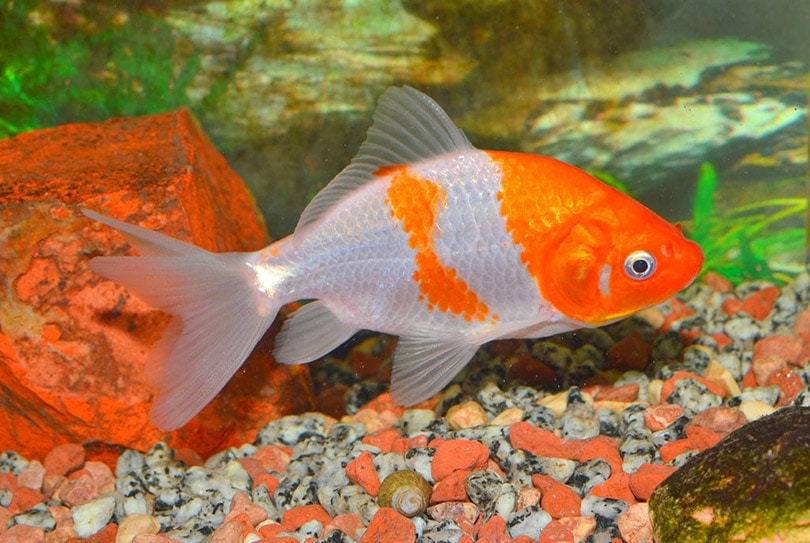
4. Poor Water Quality
If you do not keep up with water changes or provide your goldfish with a quality filtration system, they will get ill or stressed from poor water conditions. This should be dealt with as quickly as possible to prevent the goldfish from getting worse. Poor water quality causes nitrate, ammonia, or nitrite poisoning, which is deadly.
- Solution: Do regular water changes, test the water regularly with a liquid testing kit, and use a quality filter in your goldfish tank.
If you are looking for help to get the water quality just right for your goldfish family in their aquarium, or just want to learn more about goldfish water quality (and more!), we recommend you check out the best-selling book, The Truth About Goldfish, on Amazon today. It covers everything from water conditioners to tank maintenance, and it also gives you full, hard copy access to their essential fishkeeping medicine cabinet!
5. Suffocation
Goldfish in tall tanks or in tanks that are too warm or lack an aeration system will start to slowly suffocate in their tank. This is a huge concern that can quickly yet painfully take the life of your goldfish. Your goldfish may be so lethargic and tired that they give up on gulping oxygen from the surface, and instead, they slowly suffocate at the bottom of the tank. You may also notice rapid gill movement and gasping while they lay at the bottom.
- Solution: Address the underlying cause of suffocation (inadequate filtration, poisoning, etc.)
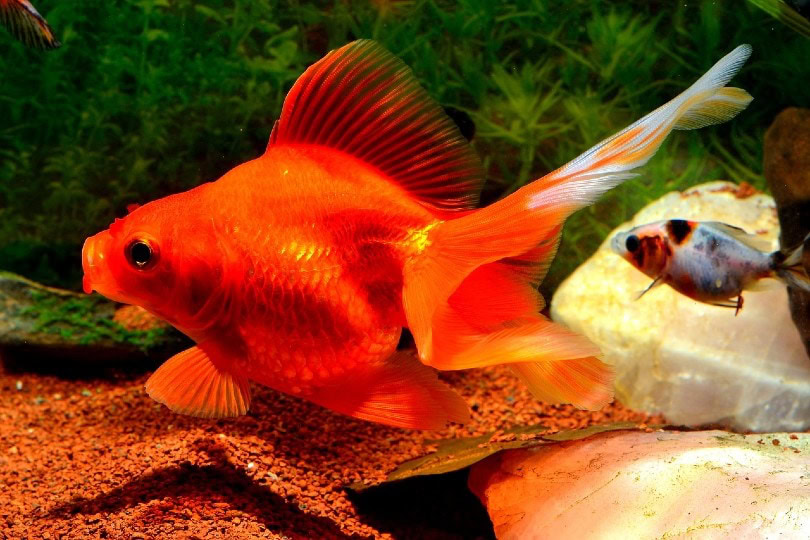
6. Inadequate Diet (Deficiency)
Goldfish can suffer when they are kept on a low-quality diet with no variety. Goldfish require a high amount of protein with balanced levels of fiber and fat. They should also be fed a mixture of foods alongside their staple commercial diet. Over time, a low-quality diet will cause them to develop poorly and appear deformed. They will also not have enough energy to swim around the tank. In bad cases, their organs may begin to shut down and they may develop dropsy.
- Solution: Feed them a varied diet with protein supplements like brine shrimp or bloodworms. Choose the best quality goldfish food available and ensure it contains added vitamins and minerals.
7. Environmental Distress
If your goldfish is kept in an environment that regularly experiences loud noises, vibrations, or just general boisterous human activity, it can easily become startled and stressed. This will make them seek out shelter under a decoration or plant and lay on the ground underneath it.
- Solution: Place the tank in a calm and quiet area where it cannot be knocked, and ensure there are no loud noises in the environment.
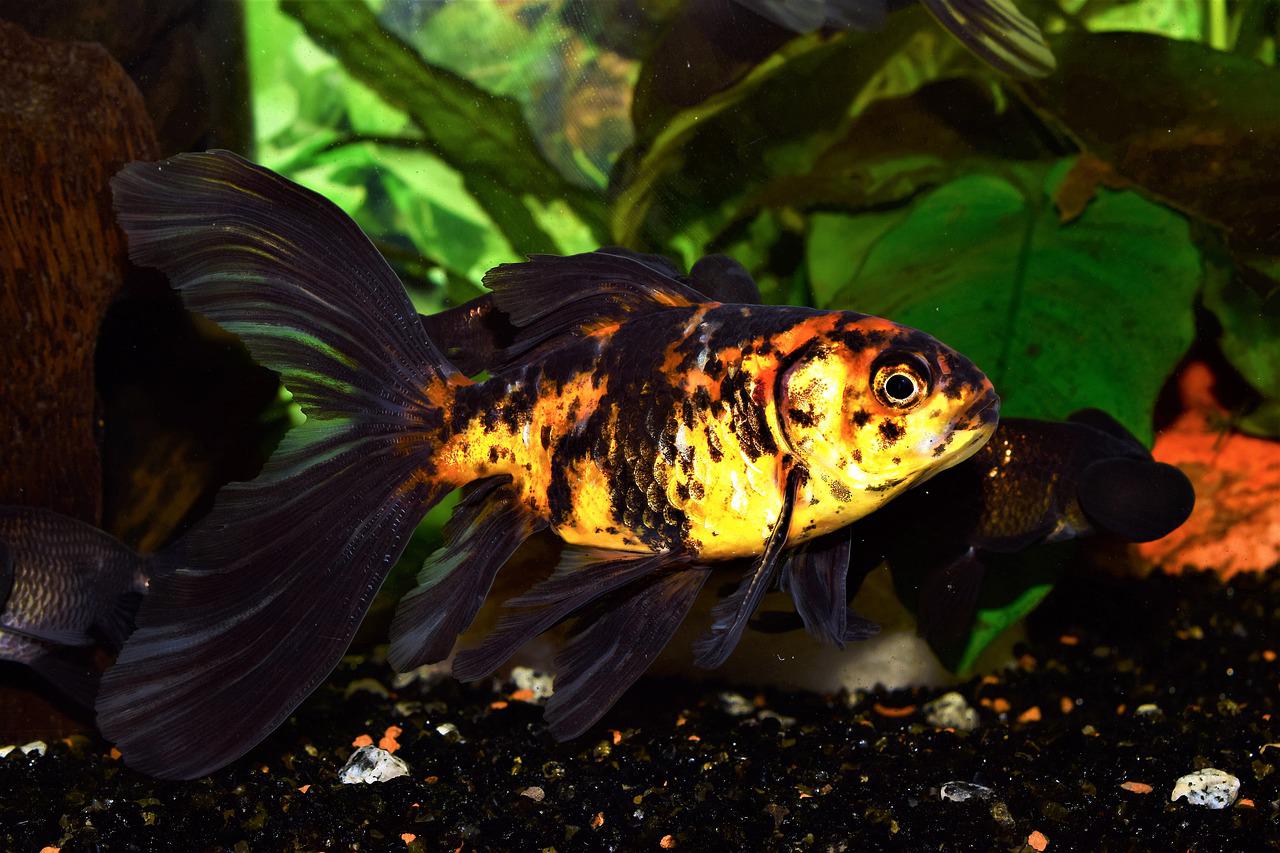
8. Swim Bladder Disorder
Goldfish can suffer from problems with their swim bladder, which inflates and deflates air for buoyancy purposes. If the goldfish struggles to swim and keeps sinking to the bottom of the tank, it could have a potential swim bladder disorder. Depending on what caused this bout of swim bladder issues, the fish will need immediate treatment. It can be related to genetics, feeding amount, and digestion.
- Solution: Do not overfeed your fish. Keep the water warmer for fancy goldfish varieties and try to feed shelled peas at least once a week.
9. Parasites
Parasites can wreak havoc on your goldfish’s body. The result of long-term parasite exposure can lead to all sorts of health issues for your goldfish. Parasites can cause a variety of diseases in goldfish that will cause them to lay on the bottom of the tank. There will be signs of parasites in your goldfish if this is the reason that they are bottom-sitting.
- Solution: If you notice your goldfish has signs of a parasite, you should treat them with quality medication prescribed by your vet or a knowledgeable marine specialist.
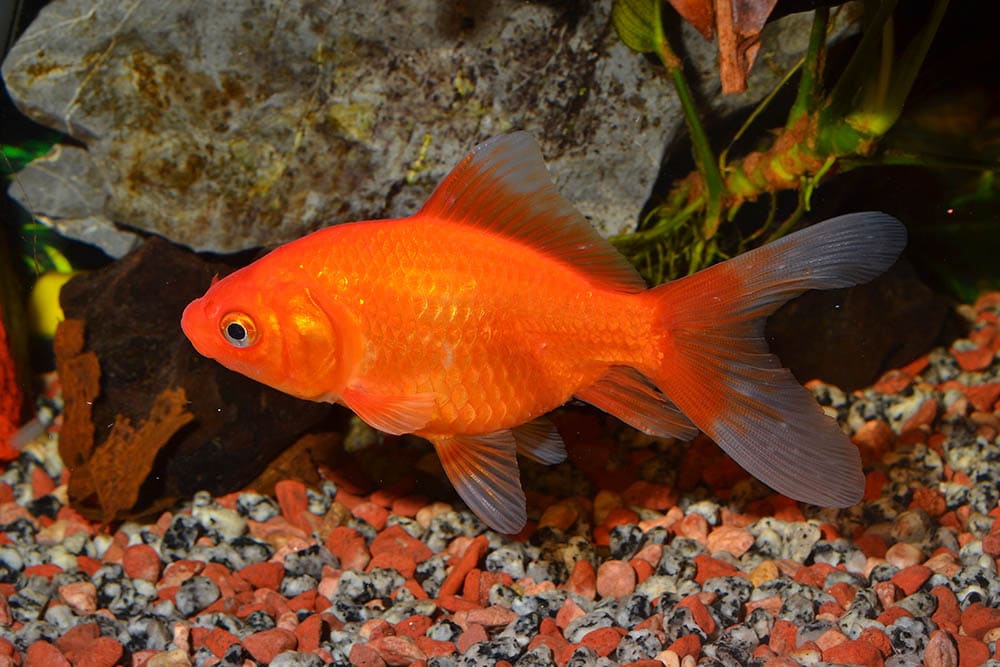
10. Digestion Issues
This is a common occurrence in fancy goldfish because of their rounded bodies and compressed organs. They will have trouble digesting their food as well as effectively passing their waste. This can be a painful issue and will cause them to bottom sit while they are trying to pass waste, or it can sometimes occur after they eat.
- Solution: Give the goldfish an Epsom salt bath and gradually increase the water temperature. You can also feed them cucumber or shelled peas. Feed your goldfish smaller meals throughout the day instead of one large meal.

Final Thoughts
Now that we have discovered the main causes of goldfish bottom-sit, it will be easier to diagnose and effectively treat the fish. It is always a good idea to regularly check how your goldfish is acting within the tank so you can catch any problems early on. The sooner you start treating your goldfish, the more likely they are to bounce back from their health issue.
- Related Read: Why Your Goldfish Is Not Eating: Vet-Reviewed Reasons
Featured Image Credit: seaonweb, Shutterstock
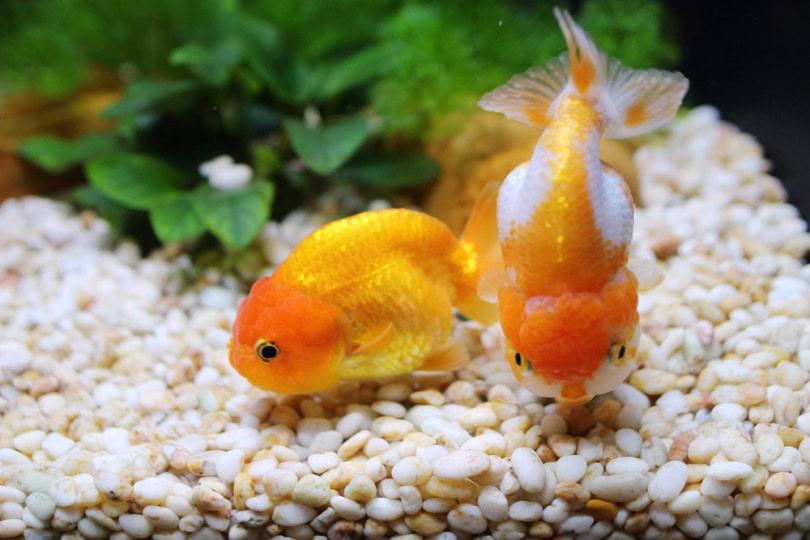





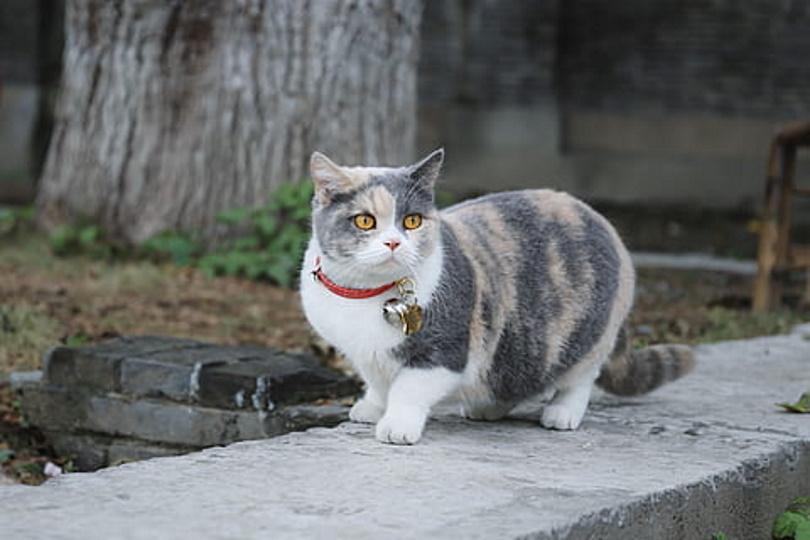
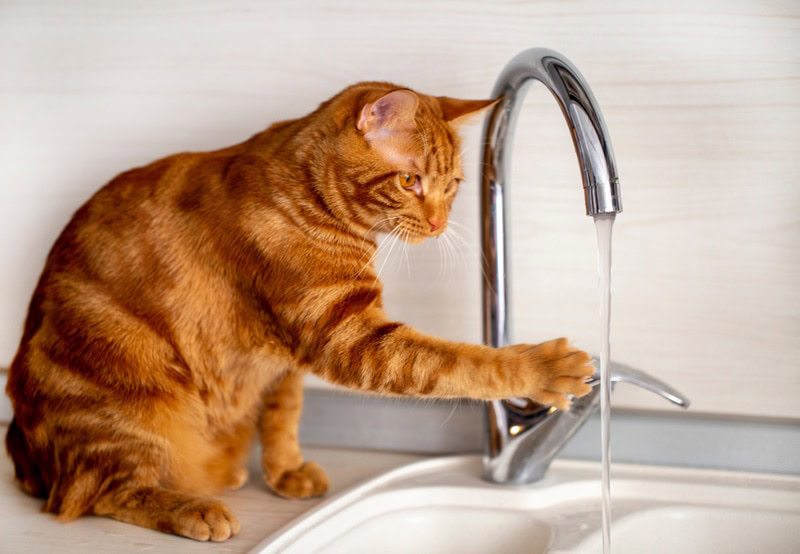



6 Responses
Help! And I would love to interview you in my show…
New fish last one 15 years died of swim bladder … new Fancy Fish is getting black fin tips and at the bottom…
Help
Hello Greg,
thank you for your question. We are very sorry to hear about your issues with your fish. Unfortunately, there is a number of reasons your fish may develop health problems.
We would like to recommend you to read another of our articles related to goldfish changing color:
– Why Is My Goldfish Turning Black? 5 Vet-Verified Reasons
Perhaps you will be able to identify the issue with the help of this article. In any case, we strongly recommend you to get in touch with your veterinarian.
Best of luck to you!
Wjat voncentration should the epsom salt bath be and how long should the fish be kept in it?
Hello Derek,
Thank you for your question. The ratio of water to Epsom salt should be one gallon to 1-3 tablespoons. Just remember to use the water from the tank!
It’s important to note that while Epsom salt baths are commonly used to address issues like constipation or swelling in fish, the optimal concentration and duration can vary depending on the species and specific health concerns. Therefore, it’s advisable to consult with a veterinarian experienced in fish health or refer to species-specific care guides for tailored advice.
Hope this helps.
My six year old oranda looks fine but spends a lot of time on bottom /sleeping. She eats well when fed and swims around from time to time.
Hello Michael,
thank you for your comment. First of all we are sorry to hear that you have issues with your Oranda. Since you said the fish seems fine and eats well, there is a good chance the reason is nothing too serious. We suggest you try the solutions listed in our article and if nothing works and you won’t see an improvement, it will be better if you contact your veterinarian for an advice.
Best of luck!